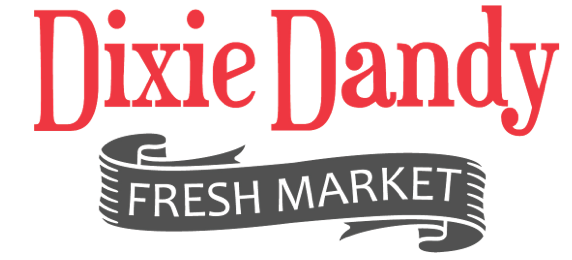The journey to healthy eating truly begins at your local grocery store. Stocking up and having plenty of options to healthfully satisfy any craving is the key to supporting the best of intentions—especially with an increase in meals eaten at home due to COVID-19.
The brand-new Dietary Guidelines for Americans offer a road map to making all those bites count! While many of the recommendations are consistent with previous guidance, the new Guidelines have been expanded, for the first time, to provide targeted advice for feeding infants and toddlers up to 2 years of age.
Use the cheat sheet below to get up to speed on the 2020-2025 Dietary Guidelines for Americans with fresh ideas to put them into practice on your next shopping trip.
Guideline #1: Follow a healthy dietary pattern at every life stage. It’s never too early or too late to tweak what you and your family eat to be as healthy as possible. That said, the goal is to start young kids early – with the complementary feeding period (around 4-6 months, depending when infants show interest in food). During this time, it’s important to expose them to a mix of healthy options that will get them used to a variety of flavors and textures. Not-so-fun fact – around 2 years of age, kids typically start adopting the family diet and this is when they surpass limits for sodium and added sugars. Guard against this potential pitfall with the following tips:
- Remember there is lots of flexibility for first foods – just make sure they aren’t a choking hazard! Your supermarket will have a wide array of baby foods. You can also “de-construct” foods from your family meals. Think mashed black beans for protein; mashed avocados, bananas, and potatoes for produce; yogurt and cheese for dairy.
- Model healthy eating – kids watch what we do. Make sure to choose healthy options, within all the food groups, and talk about how eating healthy food makes you feel good! We know enjoying meals together, as a family, can lead to better eating habits (think more fruits and vegetables) and mental and behavioral benefits for children (lower risk of depression and risky behaviors, to name just two). There’s officially never been a better time to institute regular family meals than during a global pandemic!
Guideline #2: Customize and enjoy nutrient-dense food and beverage choices to reflect personal preferences, cultural traditions, and budgetary considerations. Nutrient-dense is defined as foods and beverages that contain plenty of vitamins, minerals, and other health-promoting components, but are limited in added sugars, saturated fat, and sodium. The good news is that it’s not as complicated as it may sound. You can find nutrient-dense options in every food group and around the store:
- Start with in-season fruits and vegetables from the perimeter and stock up on the staples (lettuce, tomatoes, bananas, onions). Then think about what you need on hand or what you may want to prepare this week. Supplement so that you always have canned, frozen, dried fruits and vegetables and 100% juice on hand.
- Next up protein. Find fresh seafood, poultry, and lean beef from the perimeter. You can buy in bulk and freeze what you don’t need for the coming week. Or, you can fill your freezer at home with your favorite frozen protein selections from the market. Canned or dried beans are also a great go-to to have at the ready in your pantry.
- Low-fat dairy. There are a wide variety of options in the refrigerated section including low-fat and fat-free milk, yogurt, and cottage cheese. It’s also a good idea to have shelf-stable milk options in the pantry.
- Grains can be found throughout the store. Mix it up with whole wheat breads, packaged or freshly baked; ready-made from the deli section; and any number of great options from the center of the store (e.g., quinoa, barley, brown rice, whole wheat pasta, etc.).
- Finally, add the herbs, spices, and other flavors you love. These offer flavor without the need for added salt and transform your dish into flavorful reflections from cultures around the world! You can go fresh with herbs from the produce department and/or look into flavor blends in the spice aisle. Blends help keep it interesting while saving money on buying spices and herbs individually.
Guideline #3: Focus on meeting food group needs with nutrient-dense foods and beverages, and stay within calorie limits. The two key phrases here are “nutrient-dense” and “calorie limits”. We discussed nutrient density, now calorie limits.
- First, know how much you need. This amount will likely be slightly or significantly different among different members of your family. Your MyPlate Plan will give you the number that’s right for each individual in your household.
- And, don’t worry, you don’t have to count calories if you don’t want to. MyPlate gives your recommendations in food group amounts so that you can choose what you like and know how much to eat throughout the day.
Guideline #4: Limit foods and beverages higher in added sugars, saturated fat, and sodium, and limit alcoholic beverages.
- Read the label. The Nutrition Facts Panel tells you all you need to know about these nutrients to limit. You will see a gram amount and a % Daily Value (DV). A quick rule of thumb to identify if a food has a relatively “high” or “low” amount of these nutrients is the “5-20 rule”. If it’s 5% DV or less, that’s low. If it’s 20% DV or more, that is high. For more healthful nutrients, such as fiber, protein, or vitamins/minerals, strive for a higher %DV value. For nutrients to limit, go low.
Know when to look. Save time by checking out the label on products that you haven’t purchased before or that have been reformulated.

